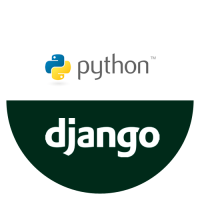
Configuration
18-Jan-2024Quickly configure Django for seamless web development. Master settings and databases effortlessly.
Django Project Configuration
Now that Django is installed, let's configure your project for optimal development. Follow these steps to set up and customize your Django project.
Step 1 : Navigate to Your Project Directory
Open your terminal or command prompt and move to the directory where you created your Django project :
# Change directory to your Django project
cd myproject# Replace "myproject" with the name of your Django project
Step 2 : Adjust Project Settings
Django projects come with a settings file (settings.py) that you can tailor to your needs. Open this file in your preferred text editor and make the following adjustments:
Database Configuration :
Configure your database settings, including the database engine, name, user, and password, under the DATABASES section.
# Configure your database settings
DATABASES = {
'default': {
'ENGINE': 'django.db.backends.sqlite3', 'NAME': BASE_DIR / "db.sqlite3", }
}
# Replace the database engine and credentials based on your chosen database
Debug Mode (Development Only) :
Enable the DEBUG variable to True during development for detailed error pages.
DEBUG = True
Static and Media Files :
Configure paths for static and media files. Here are example settings for local development :
# Configure static and media file settingsSTATIC_URL = '/static/'
MEDIA_URL = '/media/'
STATICFILES_DIRS = [BASE_DIR / "static"]
MEDIA_ROOT = BASE_DIR / "media"
# Adjust these settings based on your project structure and deployment environment
Timezone and Language :
Set your project's timezone and language preferences :
TIME_ZONE = 'UTC'LANGUAGE_CODE = 'en-us'
# Adjust time zone and language settings as needed
Step 3 : Apply Migrations
Apply initial database migrations to create the necessary database tables :
python manage.py migrate
Step 4 : Create an Admin User (Optional)
For admin access, create a superuser account :
python manage.py createsuperuser# Follow the promts to set up the admin account.
Step 5 : Run the Development Server
Start the Django development server :
python manage.py runserver
Visit [ http://127.0.0.1:8000/ ] in your browser to see your Django project in action.
Congratulations! Your Django project is now configured and ready for development.


